Q
how long does it take to charge byd seal
The charging time for the BYD SEAL depends on the charging equipment used and the battery capacity. Take Malaysia's commonly available 60kWh variant as an example: a 7kW home AC charger will take roughly 8-10 hours to fully top up the battery, making it ideal for overnight charging. On the other hand, a 50kW DC fast charger can get you from 30% to 80% in around 1.2 hours, and if you plug into a more powerful 150kW fast charger, that time drops even further to about 40 minutes. It's worth keeping in mind that charging speeds can be affected by ambient temperature, the battery's initial state, and the actual output power of the charger, so it's always a good idea to check the real-time estimated time shown on your car's infotainment system. For Malaysian users, given the hot local climate, frequent use of fast charging might impact battery longevity over time. So, for daily commutes, slow charging is recommended, while fast charging can be used to save time during long road trips. Additionally, the Malaysian government is actively expanding charging infrastructure, including adding high-power chargers at highway rest stops, which means electric vehicle long-distance travel will become even more convenient in the future.
Special Disclaimer: This content is published by users and does not represent the views or position of PCauto.
Related Q&A
Q
What Segment Does BYD Seal Belong to?
The BYD Seal belongs to the D-segment cars. D-segment cars are typically mid to large-sized vehicles, well-known for striking a balance between space, comfort, and performance.
The BYD Seal has a body length of 4,800 millimeters, a width of 1,875 millimeters, and a wheelbase of 2,920 millimeters, offering passengers a relatively spacious interior. The trunk space is also quite decent. Such specification makes it suitable for comfortable long - distance trips and can meet the sufficient space requirements for daily use. Moreover, in terms of performance, the Seal provides different versions with various power outputs. It can provide a smooth daily driving experience and also offer a more exciting high - performance driving feel. Whether for family users or individual users who desire more space and better performance in their vehicles, the D - segment BYD Seal is an appealing choice.
Q
What's the Reslae Value of BYD Seal?
The BYD Seal, a relatively new electric vehicle in the Malaysian market, currently lacks complete data on its resale value, but general resale value for EVs can provide some references. Due to rapid advancements in EV technology, the resale value of electric vehicles typically declines slightly faster than that of comparable internal combustion engine (ICE) vehicles in the first three years—around 50%-60% for EVs versus 60%-70% for ICE cars.
Key factors influencing resale value include battery health (BYD offers an 8-year/160,000 km battery warranty), growing brand recognition (BYD has shown strong performance in recent years), and the maturity of EV infrastructure (such as charging network development). Compared to similar ICE vehicles, the BYD Seal's extended battery warranty and lower operating costs (electricity being significantly cheaper than fuel) may help mitigate depreciation.
For prospective buyers, it is advisable to consider certified pre-owned programs and maintain complete service records to preserve resale value. As EV adoption increases, more definitive resale value data will be provided.
Q
What's the Displacement of BYD Seal?
The BYD Seal is an electric vehicle, so it doesn't use the traditional "CC" (cubic centimeters, used to measure internal combustion engine displacement) as a metric. It provides different versions, such as the Dynamic EV, Premium (Extended Range), and Performance AWD. In terms of the powertrain, the Dynamic EV version has a total motor power of 150kW, a maximum horsepower of 204PS, and a total torque of 310N·m. The Premium (Extended Range) version has a total motor power of 230kW, a maximum horsepower of 308PS, and a torque of 360N·m. The Performance AWD version is more powerful, with a combined system power of 390kW, a combined horsepower of 523PS, and a combined torque of 670N·m. These motors can provide efficient and strong power output, meeting different consumers' needs for speed, range, etc. Moreover, the all - electric drive also complies with the current trend of environmental protection and energy conservation.
Q
What's the PCD Size of BYD Seal?
The PCD (Pitch Circle Diameter) of the BYD Seal is 5×114.3, which means the wheel hub has 5 bolt holes evenly distributed on a circle with a diameter of 114.3 millimeters, matching the standard used by many mainstream Japanese vehicles (such as Honda and Toyota). So, it's easy to find compatible wheel hub options for modification or replacement in the Malaysian market.
Beyond PCD, wheel modifications also require attention to other parameters, including the hub bore (recommended to use OEM-concentric hub rings for precise fitting), offset (ET value), and wheel width to avoid affecting suspension geometry or causing friction. For wheel upgrades, it is advisable to choose EV-rated products that can accommodate the Seal's battery weight and prioritize purchasing through BYD-certified channels to ensure safety and compatibility.
Q
Does BYD Seal Support Apple Carplay?
The BYD Seal doesn't have the Apple CarPlay feature. Apple CarPlay is a system developed by Apple Inc., which allows iPhone users to connect their devices to the in-vehicle infotainment system. Although some car models in the market support this feature, the BYD Seal isn't one of them.
However, the BYD Seal has its own advanced infotainment system. It's equipped with a 15.6 - inch intelligent rotating touchscreen, which can provide a wide range of entertainment and vehicle control functions. This car also adopts a comprehensive set of standard configurations, such as various safety systems, comfortable seats with multiple adjustment options, and a high - quality sound system with 12 Dynaudio speakers. Even though the Seal doesn't have Apple CarPlay, its own infotainment capabilities can still bring users a convenient and pleasant driving experience.
Q
What's the Brand of BYD Seal's Tire?
The original tires of the BYD Seal are usually high-performance tires from Michelin or Continental. The specific tire models might be Pilot Sport EV or EcoContact 6, which are optimized for electric vehicles to match its powerful performance and noise reduction requirements. These tires are characterized by a low rolling resistance to improve the vehicle's range, the reinforced structures to handle the additional weight of EVs, and noise-reducing tread patterns to minimize road noise.
If you need to replace the tires, it is recommended to choose EV - specific tires of the same specifications. Pay attention to the size markings such as 235/45 R19 or 245/40 R20 (depending on the specific vehicle configuration), and also consider the wet - surface grip and wear - resistance index. When purchasing, you can go through BYD's official services or authorized tire dealers to ensure you get products that are suitable for the characteristics of electric vehicles.
Q
Is BYD Seal a Good Choice? Learn the Pros and Cons Here
The BYD Seal is a truly outstanding electric sedan that boasts high competitiveness in the Malaysian market. It's equipped with BYD's advanced e-Platform 3.0 technology and efficient Blade Batteries, offering excellent range performance (up to approximately 570 kilometers under the WLTP standard) and fast charging capabilities, which perfectly meet the local long - distance driving needs.
This car stands out with its remarkable power performance. The dual - motor all - wheel drive version can accelerate from 0 to 100 km/h in just 3.8 seconds. The driving experience is comparable to that of high - performance fuel - powered vehicles. Meanwhile, the electric system provides a smooth and quiet ride.
The interior uses high - quality materials and has luxury features such as a 15.6 - inch rotating central control screen and a Dynaudio sound system. It's also equipped with BYD's DiPilot intelligent driving assistance system to enhance driving safety.
As a pure - electric vehicle, it outperforms traditional fuel - powered cars in terms of maintenance costs, environmental - friendliness, and technology equipment. Although the price is not low, compared with other vehicles in the same class (like the Tesla Model 3), it has advantages in terms of cost - effectiveness and local after - sales service. It's a great choice for Malaysian consumers who are looking for high performance and low vehicle - using costs.
Q
What's the Width of BYD Seal?
The width of all BYD Seal variants is uniformly 1875mm. Vehicle width refers to the horizontal distance between the outermost rigid fixed protrusions on both sides within the vehicle's longitudinal symmetrical plane. This width dimension not only influences the visual effect of the vehicle's exterior, giving it a more imposing and stable appearance, but also affects the interior space layout, indicating a relatively spacious lateral cabin area, providing a more comfortable riding experience for both drivers and passengers, particularly ensuring rear occupants do not feel overly cramped. Additionally, during driving, the width contributes to stability to a certain extent, with an appropriate width helping to enhance the vehicle's stability during high-speed driving or cornering.
Q
What's the Road Tax of BYD Seal? How to Calculate It?
Currently, all electric vehicles registered in Malaysia are exempt from road tax, with the tax exemption period set to expire at the end of 2025. Starting from January 1, 2026, the road tax rates for electric vehicles will be calculated in tiers based on the vehicle's motor power:
The first tier applies to EVs with motor power below 100kW, where the tax increases by RM10 for every additional 10kW. The second tier applies to vehicles with 100kW to 210kW, where the tax increases by RM20 for every additional 10kW. The third tier covers EVs with power between 210kW (exclusive) and 310kW, where the tax increases by RM30 for every additional 10kW.
Taking the BYD Seal models as an example:
The 2024 BYD Seal Dynamic EV, with a total motor power of 150kW, falls under the second tier. Since it exceeds 100kW by 50kW, the road tax is calculated at RM20 per 10kW, resulting in RM100.
The 2024 BYD Seal Premium (Extended Range), with a total motor power of 230kW, falls under the third tier. Exceeding 210kW by 20kW, the road tax amounts to RM60.
The 2024 BYD Seal Performance AWD, with a total motor power of 390kW, also falls under the third tier. Exceeding 210kW by 180kW, the road tax is calculated at RM540.
Q
What‘s the Oil Capacity of BYD Seal's Engine?
The BYD Seal is an electric vehicle (EV), so it doesn't require engine oil but is powered by electric motors.
The three variants of the BYD Seal, namely the 2024 BYD Seal Dynamic EV, 2024 BYD Seal Premium (Extended Range), and 2024 BYD Seal Performance AWD, all run on electricity. They adopt battery systems like the BYD Blade Battery or Lithium iron phosphate battery for energy storage, and electric drivetrains.
For EVs, maintenance focuses more on battery health, charging system checks, and the condition of electric components rather than engine oil changes, making them more environmentally friendly and often require less frequent maintenance compared with traditional gasoline or diesel-powered cars.
Latest Q&A
Q
How to open the hood of Subaru Crosstrek?
To pop the hood on a Subaru Crosstrek, start by locate the hood release lever under the left side of the driver’s seat. Give it a good pull until you hear the hood slightly pop up. Then head around to the front of the car, stick your hand into the gap at the center of the hood’s leading edge, and find the secondary safety latch—it’s usually a small lever or button. Push or flip that latch to the side while gently lifting the hood up. The Crosstrek uses this double-latch setup to make sure the hood stays put while you’re driving, which is a solid safety move.
Here in Malaysia, with our hot and rainy weather, it’s super important to regularly check the fluid levels and components under the hood. Keep an eye on things like coolant and brake fluid especially—they’re key to keeping your ride running smoothly. If you notice the hood feels heavy or tough to lift, check the support struts to make sure they’re working right. A little lubricant on the hinges can also help if needed. And let’s not forget Subaru’s unique boxer engine layout—when you’re poking around, take note of how the hoses and wiring are routed to avoid accidentally bumping or damaging anything.
Q
What colors does Subaru Crosstrek have?
As of 2023, the Subaru Crosstrek's color palette in Malaysia typically leans into classic, practical choices. Think Crystal White Pearl, Magnetite Gray Metallic, Deep Blue Pearl, Ignition Red Crystal, and Cool Gray Khaki – shades that balance everyday dirt resistance with that outdoorsy, stylish vibe. Of course, availability can shift slightly depending on the model year or if there's a special edition in the mix.
For Malaysian buyers, picking a color isn't just about personal taste; the local climate plays a role too. Lighter hues tend to handle the heat better and hide dust, while darker tones exude a more steady presence, which can be nice for business settings.
Subaru's paint tech is worth noting here – they use eco-friendly water-based paints and anti-UV treatments, which do a solid job of keeping the color from fading. That's a big plus in Malaysia's year-round high temperature and humidity conditions.
If you're after the latest color options or any limited-edition finishes, your best bet is to hit up a Subaru authorized dealer in Malaysia. They'll have the most accurate info on current stock and any customization options. Plus, they can give you practical tips on keeping that paint looking sharp, like regular waxing to protect against acid rain and harsh sunlight.
Q
When to replace the spark plugs of Subaru Crosstrek?
The Subaru Crosstrek's spark plugs typically need changing every 60,000 kilometers or 5 years, whichever comes first. That's the standard from the factory service manual, but you might need to adjust based on your driving conditions and habits. For example, if you're doing a lot of short trips or frequent stop-starts in Malaysia's hot weather, you should check them as early as 40,000 km.
Subaru's boxer engine design puts the spark plugs in a tougher working environment, so it's best to stick with the original iridium or platinum plugs recommended by the factory. These ensure better durability and ignition performance. Keep an eye out for signs like hard starting, rough idling, increased fuel consumption, or sluggish acceleration—those could mean your plugs are wearing out and need checking.
Malaysia's humid, rainy climate can also speed up wear on ignition system components, so don't forget to regularly inspect the ignition coils and high-tension leads too. If you're a DIY enthusiast, know that changing the Crosstrek's plugs requires special tools, and their position in the boxer engine is a bit tricky. If you're not experienced, better leave it to the pros to avoid damaging the threads or ignition coils.
For daily maintenance, using a good quality fuel additive can help clean carbon deposits in the combustion chamber, which indirectly extends plug life—but it's no substitute for regular replacement.
Q
Which gasoline suits Subaru Crosstrek?
For Subaru Crosstrek owners in Malaysia, you've got two solid fuel choices: RON 95 or RON 97 unleaded petrol. The decision really comes down to your budget and how you drive. RON 95 is the practical pick – it's more wallet-friendly and totally up to the task for everyday commuting and most driving scenarios. On the flip side, RON 97 can deliver slightly more consistent combustion efficiency when you're pushing the engine hard, like during high-load situations or spirited driving.
Under the hood, the Crosstrek's FB20 boxer engine is naturally aspirated and actually pretty flexible when it comes to fuel. That said, if you want to keep carbon buildup in check, it's a good idea to opt for Euro 5 compliant fuel when you can – it's cleaner and better for the engine in the long run.
Malaysian Crosstrek drivers should also remember to regularly use the fuel additives recommended by Subaru. This is especially important for maintaining the health of the direct injection system, which can be prone to carbon deposits if you skimp on this. Another thing to note is that fuel quality can vary a bit from region to region. If you're heading out on a road trip to more remote areas, maybe consider bumping up to a higher octane fuel just to be safe, as the local petrol might not be as consistent.
Here's the key point though: unlike some high-performance cars that demand premium fuel, the Crosstrek's engine isn't tuned to require RON 97. So, don't feel pressured to shell out extra cash for higher octane than you need – it's just unnecessary expense. At the end of the day, keeping up with regular maintenance and sticking to reputable petrol stations are the best ways to keep your Crosstrek's engine running smoothly for years to come.
Q
How many miles can a Subaru Crosstrek run?
The Subaru Crosstrek, that compact SUV known for its rugged durability and full-time all-wheel drive system, can typically clock up 200,000 to 300,000 kilometers – and often more – with proper care. Of course, your actual mileage will depend on your driving style, how regularly you service it, and let's not forget Malaysia's unique road conditions and climate. That hot, humid weather can take a toll on rubber components and electronics, so I'd recommend keeping up with coolant changes and giving your chassis parts a regular once-over.
Subaru's boxer engine is great for that low center of gravity, but it does demand stricter oil change schedules. Stick to fully synthetic oil and change it every 5,000 kilometers or 6 months, whichever comes first. For Malaysian Crosstrek owners, those rainy seasons mean paying extra attention to your brake system and making sure those sunroof drain holes stay clear – you don't want water pooling up where it shouldn't.
The real key to making your Crosstrek last? Follow the manufacturer's service manual to the letter, use genuine or approved parts, and don't ignore those little niggles like strange noises or warning lights – fix 'em early. In the competitive compact SUV segment, the Crosstrek holds its value pretty well, sitting comfortably in the upper-middle range. The used car market really appreciates a vehicle with a complete service history, so hang onto all those repair receipts – they'll definitely help boost your resale price down the line.
View MoreRelated News

2025 BYD Seal Coming to Malaysia with DiSus-C Adaptive Suspension
JohnAug 13, 2025
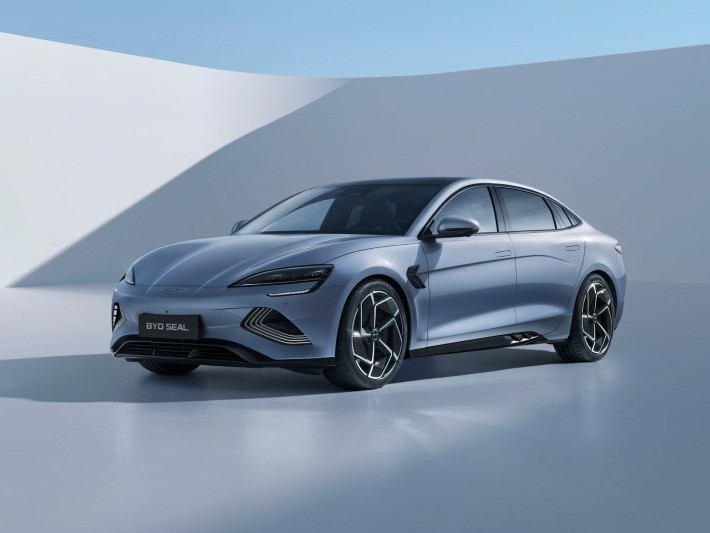
BYD Seal interior design revealed: A fusion of modern technology and luxury
RobertJul 15, 2025
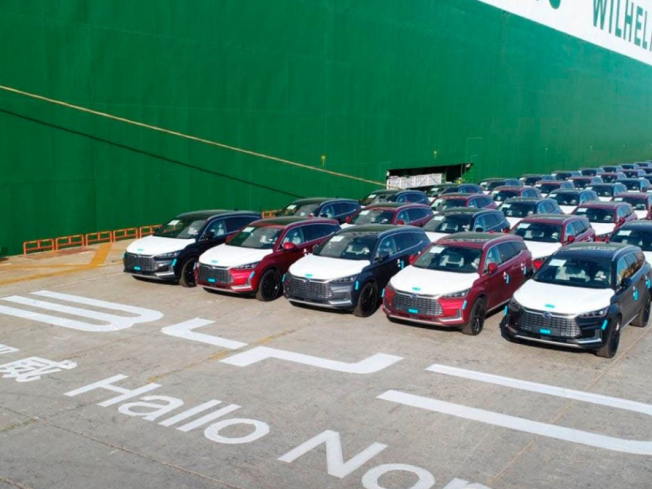
BYD Exports 214K Vehicles in Q1, Top Sales in 7 Markets
RobertApr 30, 2025
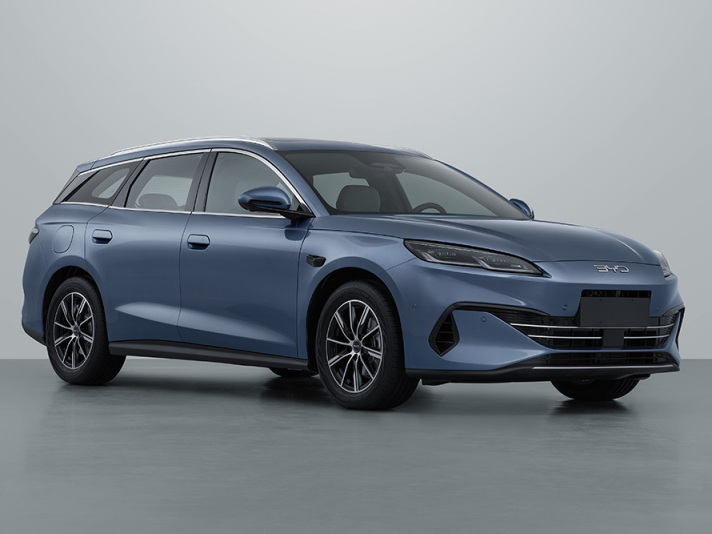
Photos of the BYD Seal 06 Touring Edition Reveal the Brand's Entry into a New Niche Market
JamesMar 24, 2025

BYD Wins Japan's Annual EV Award Again with Seal
MichaelMar 6, 2025
View More


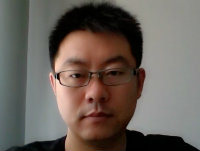





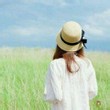



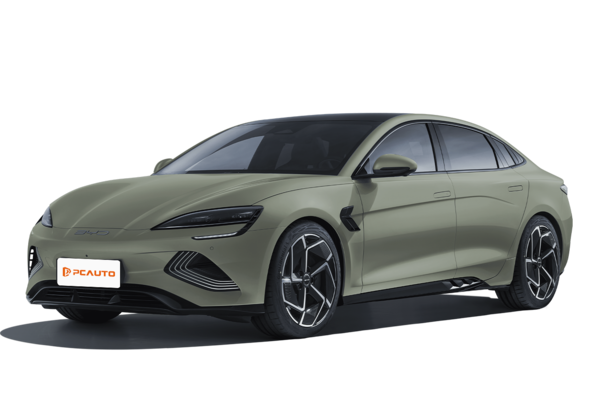





Pros
Cons